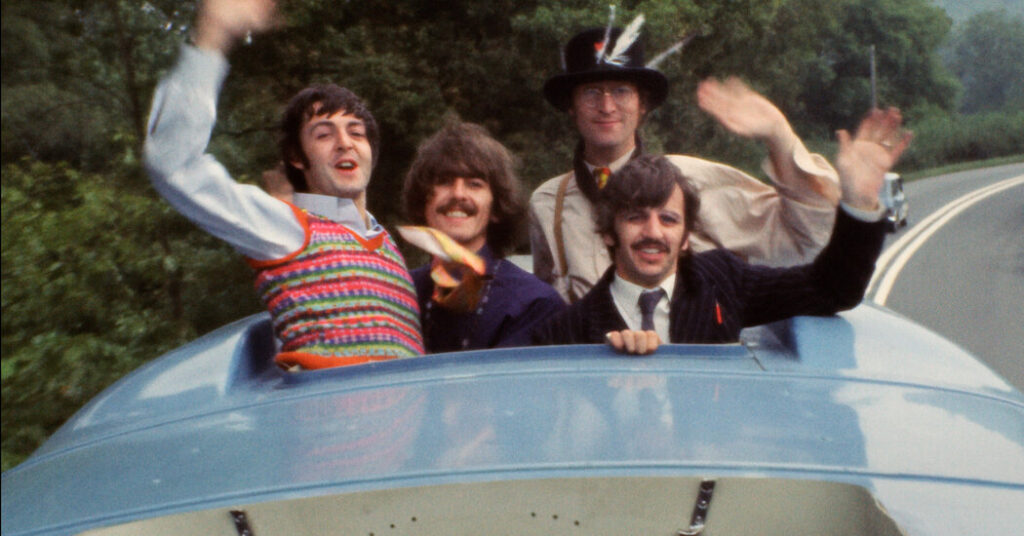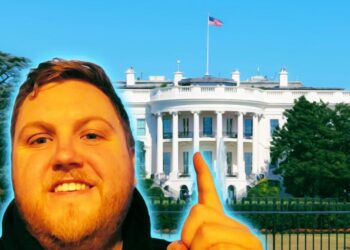Growing up, I hated the Beatles.
Well, hate is a strong word. As a teenager in the 1980s and ’90s, I was exhausted by them. The Beatles represented my parents’ generation, and their inescapable songs felt like the musical embodiment of boomer dominance. The proper Gen X rejection of the Fab Four seemed best expressed by the punk sneer of the Nation of Ulysses in 1992: “I’m not talking ’bout a Beatles song / Written a hundred years before I was born.”
What caused my attitude to shift — from curiosity to, eventually, obsession — was “The Beatles Anthology” in 1995, an in-depth, self-produced TV documentary, along with three related CD sets stuffed with alternate studio goodies. An expanded 30th-anniversary version of the series, with refreshed visuals and audio, is coming to Disney+ starting on Nov. 26. The albums, with a new fourth volume, were released this week. The project also includes a coffee-table book.
For viewers like me, the “Anthology” footage stripped away the band’s sainted legend and presented them as flawed but still heroic. In glimpses from the Beatles’ “savage young” early days, sweating in leather in Hamburg’s red-light district or at the subterranean Cavern Club in Liverpool, they could nearly be punks — and in the grunge era, that very much counted as cred.
The project also offered a seductive grand narrative, explaining the vast scale of the Beatles phenomenon and its effects on four real people. Along with John Lennon, who spoke through archival clips, the three then-surviving members — Paul McCartney, Ringo Starr and George Harrison, who died in 2001 — expressed their ambition, their ambivalence and even the grudges and gripes they had carried into their 50s.
“The Beatles were not self-editing at the time,” Bob Smeaton, the original series director and writer, recalled in a recent interview. “They would just say what came into their minds.”
The series served as a new blueprint for Fab Four historiography, a starting point for what might be called the Beatles Cinematic Universe: a constantly evolving process of the band telling and retelling their own story, tweaking the details and playlist along the way. After “Anthology,” there was the hits collection “1” (2000), the Cirque du Soleil show “Love” (2006), and an ongoing flood of annotated reissues and documentary projects like “The Beatles: Get Back” (2021), Peter Jackson’s immersive look at the group’s fraught sessions in early 1969. Coming next are four biopics by Sam Mendes, expected in 2028.
The new edition of “Anthology” — eight one-hour episodes, edited from the series’ original home-video version, plus a ninth about the surviving members gathering to complete three songs left behind by Lennon — has enough familiar scenes to satisfy boomer nostalgia. But there are also small but revelatory details like Harrison talking about his schoolboy obsession with rock ’n’ roll, as we see his sketches of guitars in an architecture notebook.
The band’s triumphant arrival in New York in 1964 is a full-on media storm. There is impossibly intimate footage shot by Albert and David Maysles — seen before, but still incredible — showing the group from inside a car in Manhattan as they are mobbed by screaming teenage fans, an eternal pop-culture ritual that connects them backward in time to Frank Sinatra and forward to Taylor Swift and K-pop idols.
It’s a reminder that the celebrity spell can always be rekindled. Jonathan Clyde, the director of production for Apple Corps, the Beatles’ company, recalled being surprised when Jackson’s “Get Back” went viral among Gen Z. “It seemed to speak to them in a way,” Clyde said in an interview. “Maybe it was sort of a reality show set in 1969.”
In 1995, the Beatles were still a steady presence on the radio, and hearing one of their hits for the thousandth time could send a young rock fan into a grouchy trance. But the fresh audio clips in the “Anthology,” in live versions or alternative cuts, could jolt you out of it.
One unearthed demo, unavailable at the time of the original series, reveals that before “Yellow Submarine” became the toddler-friendly singalong we all know, it was a gloomy acoustic number with Lennon singing: “In the place where I was born / No one cared, no one cared.” (This recording, from a “songwriting work tape” by Lennon and McCartney, was first released in a deluxe reissue of “Revolver” in 2022.)
The original footage, from the Beatles’ own vaults and licensed from dozens of other archival sources, has been given a thorough restoration, making the action seem uncannily real. Most of the music has been remixed by Giles Martin, the son of the Beatles’ producer George Martin, who made use of MAL, the machine-learning system developed by Jackson’s team in New Zealand. That process includes “demixing”: separating the many audio sources mashed together on a noisy old recording, allowing adjustments like reducing the crowd’s din while the Beatles play at Shea Stadium.
“I can now, with technology, be in a situation where I can completely solo John’s voice,” Martin said in an interview. “And it sometimes does occur to me: Wow, he would never have heard this.”
The Beatles began tending their history while the band was still active. In 1968, the British writer Hunter Davies produced “The Beatles: The Authorized Biography,” which, according to later accounts, was bowdlerized to remove rowdy details of life on the road. The origins of “Anthology” go back as far as 1969, when Neil Aspinall, a band insider who eventually became Apple Corps’ chief executive, proposed a documentary.
At the start of the ’70s, Aspinall put together a rough cut called “The Long and Winding Road,” but by then the Beatles had broken up. The project sat on the shelf until various waves of litigation were resolved in 1989. Two years later, Aspinall hired a team to finish the job. But Harrison objected to the title: “The Long and Winding Road” was a McCartney song. The more neutral “Anthology” was used instead.
The project was promoted as the band’s full, definitive history, after years of having their story told by others. Smeaton recalled that Aspinall, who died in 2008, likened the project to Ken Burns’s “The Civil War” (1990) — an ambitious multimedia approach to telling an epochal history.
But the band members’ faulty memories and conflicting accounts undermined that goal. “Our memories were terrible,” McCartney told The New York Times in 1995. “We found that after all those years, none of us could remember the stories the same. And this is supposed to be the definitive, authorized thing.”
Instead, “Anthology” is like a scrapbook of astonishing events, sometimes told in two or three or four different ways. The Beatles could not seem to agree on exactly what happened when they met Elvis Presley, or whether they were high when they received their M.B.E. honors from Queen Elizabeth II.
Smeaton recalled gently arguing with Harrison after he mentioned the band’s second performance at Shea Stadium, in 1966.
“George says, ‘We didn’t play Shea Stadium twice,’” Smeaton said. “I said, ‘George, you did.’ He says, ‘Look, Bob, I was in the band; you weren’t.’ I says, ‘George, I’ve got the footage.’ So we showed him, and George says, ‘You know what? I’m still convinced we didn’t play Shea Stadium again in ’66.’”
The “Anthology” albums have been given an audio refresh by Martin, and a fourth volume adds more outtakes. Some are striking, like a wild Take 17 of “Helter Skelter,” at the end of which McCartney declares, “Keep that one — mark it ‘fab.’” (It took four more takes to get the album version.) Others may be less essential, like a version of “Every Little Thing” from 1964 that was halted after McCartney burped.
The most controversial aspect of the original “Anthology” project was the release of two songs, “Free as a Bird” and “Real Love,” completed from raw solo demos that Lennon made in the late 1970s. They were promoted aggressively on the radio, though critics and fans were divided over their worthiness, and some were uncomfortable with the idea of Lennon’s songs being posthumously Beatle-fied. (Yoko Ono, Lennon’s widow, had given the others permission.)
A third song, “Now and Then,” was released two years ago, and the explanation at the time seemed to involve another tweaked story line. The three former Beatles had attempted “Now and Then” during the same 1995 sessions that produced “Free as a Bird” and “Real Love,” but, it was said, the technology needed to finish it had not become available until the 2020s. Never mind that in 2012, McCartney said in a documentary that Harrison had rejected “Now and Then” as “rubbish.”
Nevertheless, “Now and Then” entered the canon as the Beatles’ “last” song, a new opportunity for fans to hear the Fab Four performing together.
And “Now and Then,” it turns out, was written by Lennon a few years after I was born.
Ben Sisario, a reporter covering music and the music industry, has been writing for The Times for more than 20 years.
The post How the Beatles Got Their Hooks Into Gen X and Never Let Go appeared first on New York Times.




